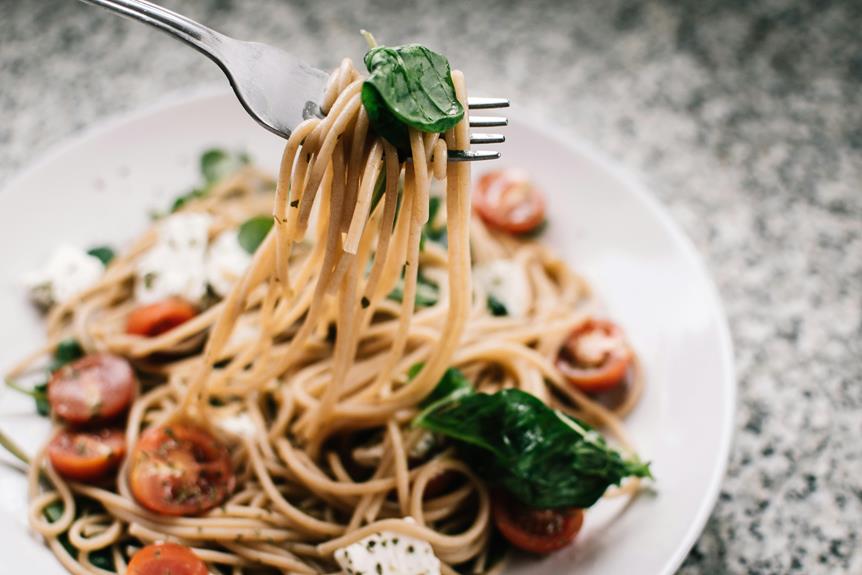Imagine you've just started your first Aerogarden and you've chosen basil as one of your plants. You're excited to see growth but soon realize that without proper pruning, your basil is growing tall and spindly rather than full and bushy. You need to prune your basil effectively to guarantee it thrives, but where do you start? By identifying the right time and technique for pruning, you can greatly enhance your basil's growth and yield. Let's explore how strategic cuts can transform your Aerogarden experience, making sure your basil is not only surviving but flourishing. What might happen if you neglect this essential step?
Key Takeaways
- Start pruning when your Aerogarden basil has 6-8 leaves to encourage bushy growth.
- Use clean, sharp scissors to cut just above a leaf pair on the central stem.
- Regularly prune every 2-3 weeks, focusing on the top of the plant to increase light exposure and air circulation.
- Remove any unhealthy or damaged leaves to maintain plant health and prevent disease.
- Thin out denser areas of the plant to ensure even growth and energy distribution.
Understanding Basil Pruning Basics
Pruning your basil is crucial for promoting robust growth and maximizing yield in your Aerogarden. You've got to be proactive in shaping the plant's progression. By strategically snipping off certain parts, you encourage your basil to become bushier, which increases the overall leaf production.
Here's how you'll take control: First, identify the central stem, which is your plant's main growth point. Just above each set of leaves on this stem, there are small shoots. These are your targets. By cutting the central stem back to just above the second set of leaves, you stimulate these shoots to grow, effectively doubling the plant's branches.
Always use clean, sharp scissors or pruning shears to make your cuts. This guarantees a clean cut that heals quickly and doesn't stress the plant unnecessarily. It's not just about making cuts; it's about making smart cuts.
Remove any leaves or stems that look unhealthy. This isn't merely a cosmetic fix—it prevents potential spread of disease and allows the healthier parts of the plant to flourish without competition.
You're not just pruning; you're orchestrating a strategy. Each cut boosts your plant's performance, tailored by your hands to yield a lush, abundant harvest.
Identifying the Right Time to Prune
Determining the best time to prune your basil in an Aerogarden can greatly enhance its growth and yield. You'll want to start pruning early to guide the basil's energy towards vibrant, bushy growth, rather than letting it stretch upwards and become leggy. Typically, the prime time to start is when your basil has 6 to 8 leaves, which usually happens about 2 to 3 weeks after planting.
Here's a quick reference table to help you visualize when and how often to prune:
| Growth Stage | Time After Planting | Pruning Action |
|---|---|---|
| Initial Growth | 2-3 weeks | First pruning |
| Developing Bushes | 4-5 weeks | Second pruning |
| Pre-flowering | 6-7 weeks | Monitor closely |
| Mature Plant | 8+ weeks | Regular upkeep |
Techniques for Effective Pruning
To effectively prune your basil, aim your scissors just above a pair of leaves to encourage bushier growth. This precise cut ensures you're taking control of the plant's development, directing energy back into the stem for more vigorous growth. You'll need to consistently monitor each stem and decide which branches require trimming to maintain an ideal shape.
Make sure your scissors are sharp and clean to prevent any damage or disease from spreading in your Aerogarden. You're in charge here, and regular sterilization of your tools keeps your basil healthy. When you make each cut, do it with confidence and precision. Hesitant snips can harm the plant more than help it.
As you prune, remove any leaves that appear damaged or diseased immediately. This proactive step stops potential problems before they escalate, giving you the upper hand in maintaining plant health.
Also, thin out the top of the plant if it becomes too crowded; this increases air circulation and light exposure to the lower leaves, essential for even growth.
Encouraging Bushier Basil Growth
Now that you understand pruning techniques, let's focus on how to achieve bushier basil growth in your Aerogarden. You'll want to start by pruning early and often. This encourages your basil to split and multiply, leading to a denser, bushier plant. Don't hesitate to cut back the central stem when your basil reaches about three inches tall—this is your golden move for promoting more lateral growth.
Make sure you're consistent with your pruning schedule. Aim to prune your basil every two to three weeks. This regular snipping not only enhances the bushiness but also prevents your basil from becoming leggy and sparse. Remember, each cut you make stimulates the plant to produce two new growing shoots, effectively doubling your plant's volume.
Additionally, be attentive to the position of your Aerogarden. Basil thrives under a lot of light, so placing it where it gets ample LED light is important for vigorous growth. More light translates to more energy, which empowers your basil to sprout fuller and richer.
Managing Common Pruning Challenges
Pruning your basil in an Aerogarden can sometimes present challenges, such as uneven growth or accidental over-pruning. Don't let these issues discourage you; you're in command, and with a few strategic moves, you'll master these hurdles.
First, tackle uneven growth by selectively pruning the taller stems, allowing the shorter ones better access to light and space. This method encourages a balanced development, ensuring all parts of your plant thrive equally. Focus on the dense areas and thin them out. It's all about redistributing energy and resources more evenly across the plant.
Accidental over-pruning can be alarming, but it's not a disaster. Basil is resilient, and with proper care, it will bounce back. If you've cut too much, simply pause pruning for a while. Let your basil recover. Keep an eye on watering and nutrient levels during this time. Your plant needs all its strength to regrow lost foliage.





Konnichiwa! (Hello!) I'm Pat Tokuyama, a Japanese tofu cookbook author, who travels for music, food, and adventure. If you like Japanese tea, checkout some of the newestorganic japanese tea, matcha bowls and noren and more!
** Curious about the Plant Based Japanese Cooking Club? ** Learn more here!